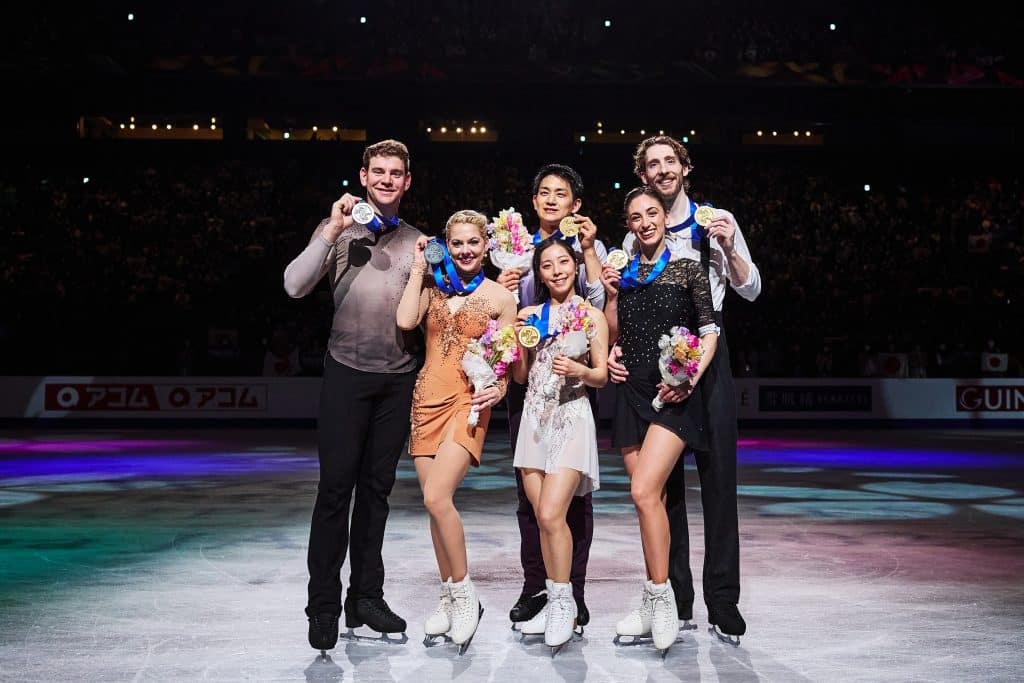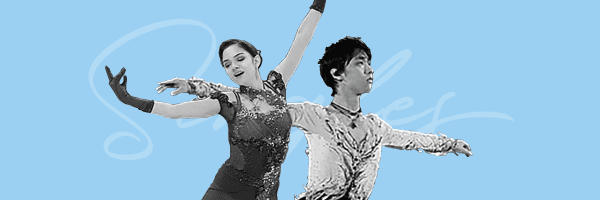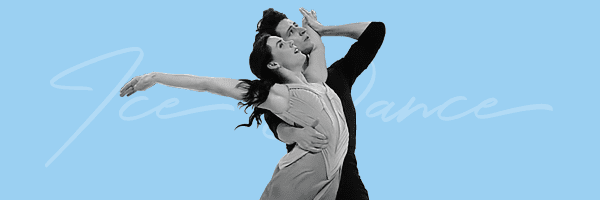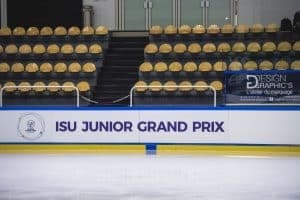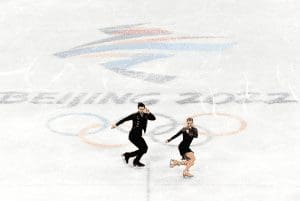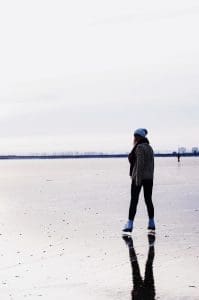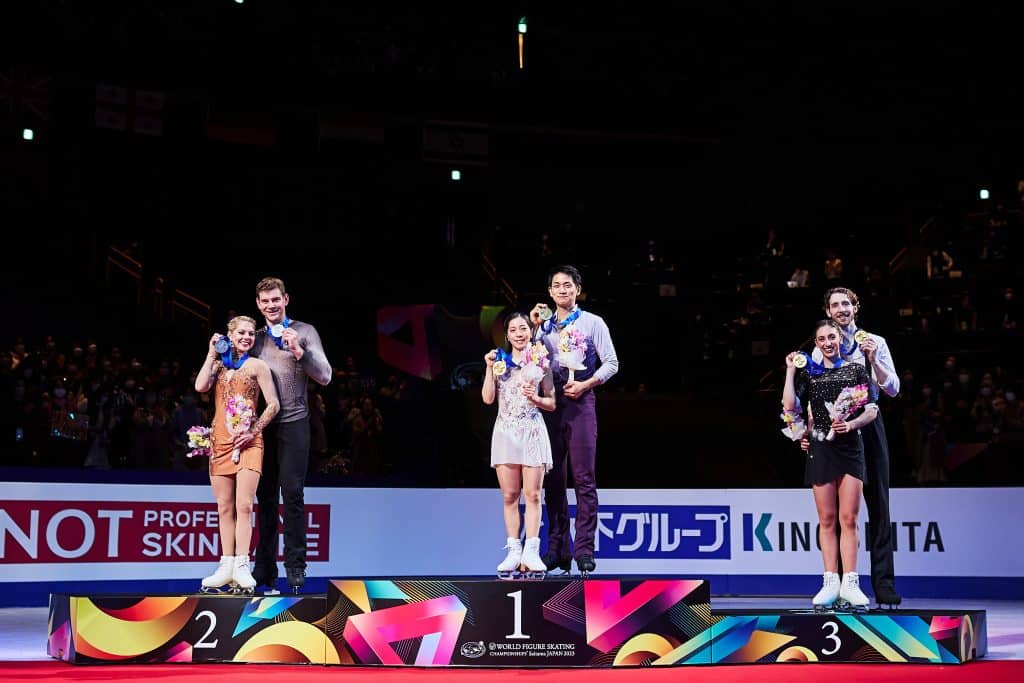
The Pairs event was the first of the four disciplines to finish in Saitama, Japan, for the 2023 World Championships, and the skaters delivered a wide array of emotive, uplifting and unforgettable performances. Riku Miura and Ryuichi Kihara became the first Japanese pair team to win the title, while the silver and bronze medal-winning teams Knierim/Frazier and Conti/Macii respectively surpassed season’s and personal bests. Read on for a closer look at some of the highlights from the event!
Results
🥇 Riku Miura / Ryuichi Kihara (Japan)
🥈 Alexa Knierim / Brandon Frazier (USA)
🥉 Sara Conti / Niccolo Macii (Italy)
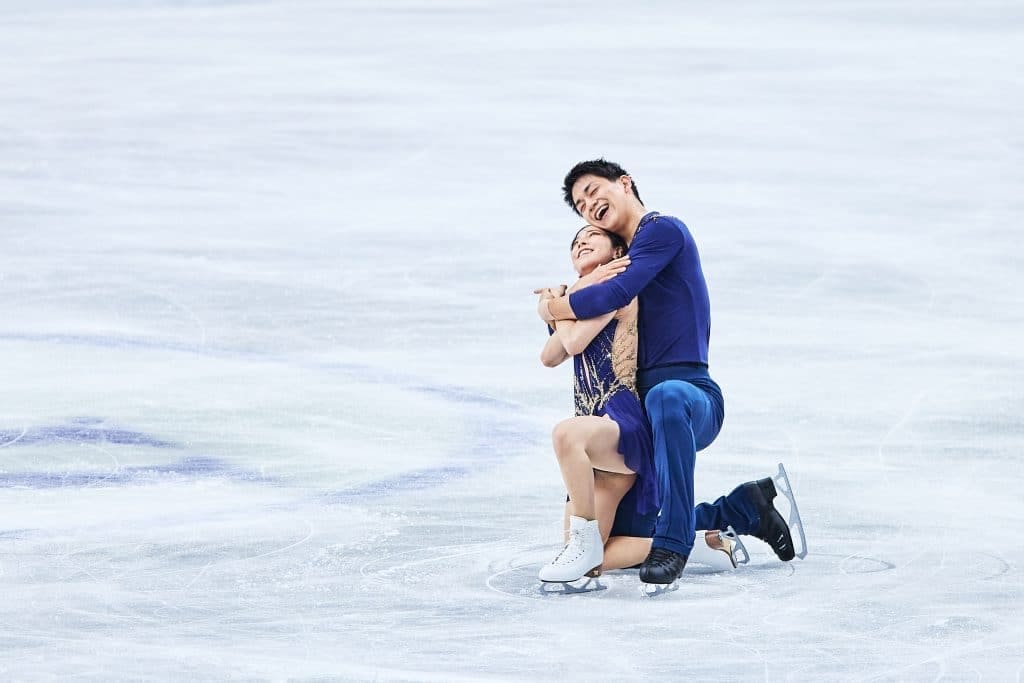
In first place, becoming the first Japanese team to ever win the event, were Riku Miura and Ryuichi Kihara, skating in front of a home audience in the Saitama Super Arena. They put down a flawless short program, showing strength in the face of the pressure placed upon them by delivering a personal best-scoring performance which was given 80.72 points. They had a level two twist, but secured level fours in all other elements, and only the side-by-side triple toeloop was given a grade of execution under +1. The throw triple lutz is a difficult element, but one that they nail with seeming ease, it has remarkable height, distance and running edge. The rousing step sequence complements the uplifting music choice of ‘You’ll Never Walk Alone’ and enables both of their personalities to shine. Their free skate set to the poetic and poignant music of Sleeping at Last is another piece which works well for the team and their style of skating. They didn’t manage to put out a clean program, with a fall from the throw triple loop near the end of the program and a deductive grade of execution from the earlier side-by-side double salchow: their free skate score was second behind that of Knierim and Frazier. Miura and Kihara cover the ice with speed and go into each element with fluidity. Their lifts were a highlight of their performance, and the final group 4 lift, with Kihara entering and exiting from a kneeling position, demonstrates their strength and stamina.
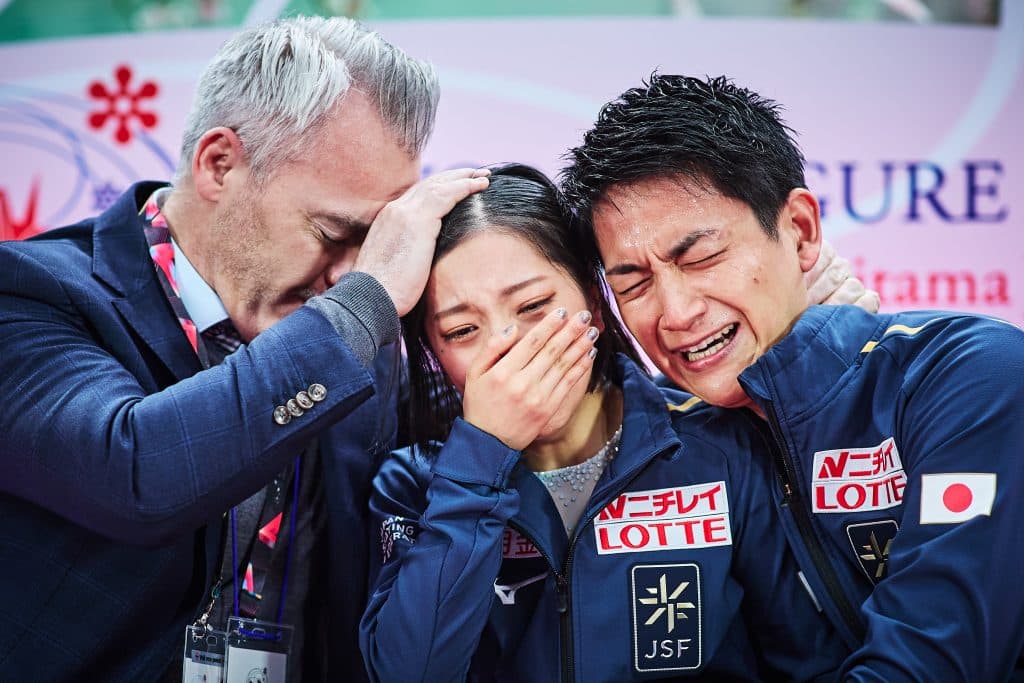
Winning the silver medal was Alexa Knierim and Brandon Frazier of the USA, who won the event at last year’s World Championships. Coming into the competition under difficult circumstances with their coach Todd Sand suffering a heart attack a couple of weeks ago, they showed two memorable and emotive performances. They were second after the short program, with a fall on the side-by-side triple toeloops, but demonstrated top quality in their other elements and racked up points in levels and high grades of execution: they are both strong performers and charismatic skaters. Their step sequence plays to these strengths, and they achieved a high PCS of 34.58. Their free skate to ‘Sign of the Times’ and ‘Healed Broken Wings’ uses rousing music which they both bring to life and instill with considerable emotion and power. Despite slight mistakes on both of their side-by-side jumping passes, with their salchow judged as landed on the quarter, their other elements were clean: their triple twist earned a +2.44 grade of execution, and their throw triple loop had excellent speed and distance. They showed a compelling conclusion to the skate, and were given a season’s best score of 142.84 for their performance.
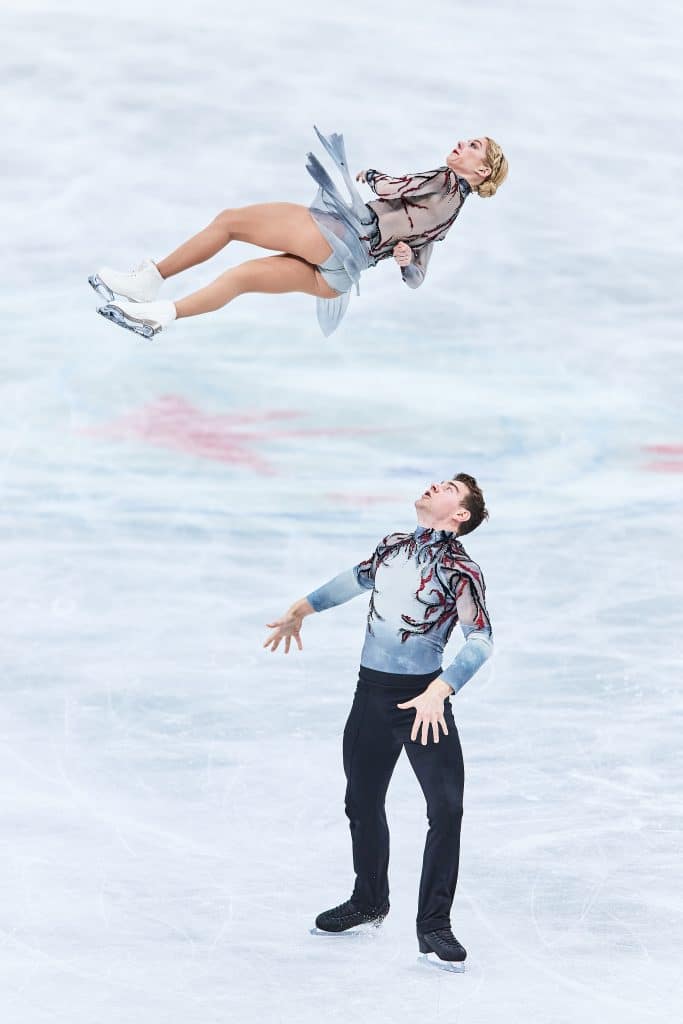
Third in both the short program and free skate, and third place overall, was Sara Conti and Niccolo Macii of Italy. The winners of the European Championships this year ahead of their compatriots Rebecca Ghilardi and Filippo Ambrosini, they thus secured two spots for Italy next season, which, given the depth of the Italian pairs field, will no doubt make way for more memorable performances. They achieved a clean short program in Saitama, with level fours on four elements including the opening triple twist. They went on to put down an incredible free skate, accompanied by the theme of ‘Cinema Paradiso’: the music is delicate, emotive and uplifting, and so is the program and its choreography. It is difficult to deliver lyricism while maintaining precision and synchrony in movements, but the two nail this feat with ease. One element (the side-by-side triple-toe-double axel sequence) was given a negative grade of execution, and they lost out on several levels in other elements, but the performance was more than enough for them to secure a third place and bronze medal, surpassing their personal best by around 10 points to get 134.84 for the free skate and a total of 208.08.
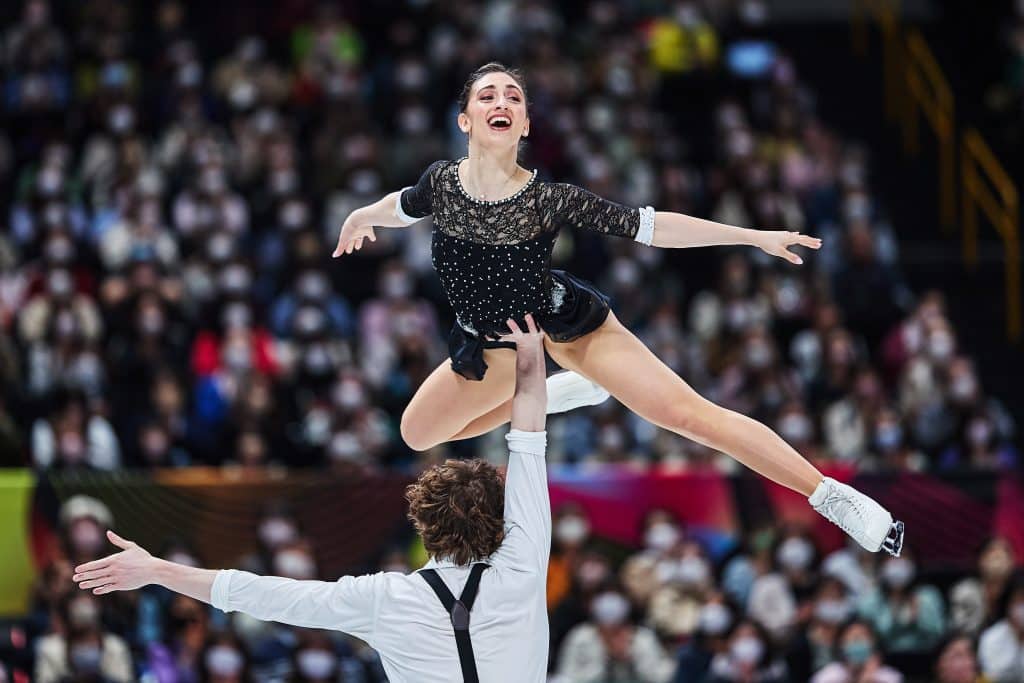
Deanna Stellato-Dudek and Maxime Deschamps of Canada were fourth overall with a total of 199.97 points. Their short program was clean and masterful, encapsulating the tango with intensity. Their side-by-side triple toe-loops were landed in synchrony, and clean positions were showcased in the lift. The deep attention that they give to their choreography is evident throughout their skating, and the step sequence was delivered with charisma and showed crisp placements. In their ‘Cleopatra’-themed free skate, the opening element, the triple twist, was nailed with great height. They had a little more difficulty in the side-by-side jumps, with an underrotation in the triple-toe-double-toe combination, and a fall in the double salchow later in the program. Stellato-Dudek and Deschamps however excelled in their lifts, with a level four given to all three, and a GOE of +2.30 attributed to the lasso lift: a testament to the strength and teamwork that the two possess. They furthermore displayed a creative entry into the final spin, making for a precise and emphatic finish to the performance.
In fifth place was Emily Chan and Spencer Akira Howe of the USA, the silver medalists at this year’s Four Continents Championships. Their short program to ‘Nyah’ is an ambitious choice of music, but one that they pull off with skill, showing praiseworthy attention to the various beats, accents and nuances of the percussive piece. There were small errors in several elements, with negative GOEs in their throw triple loop, and an under-rotation in the side-by-side triple toeloop; despite this, they put down a strong skate and earned 70.23 points. They struggled a little in their free skate set to a medley of music from ‘Ghost’. It is a popular selection of pieces, but it works well for the team, as they are able to express the softer sections with sensitivity whilst also building up to the climax of ‘Unchained Melody’. The opening half of the program was riddled with errors, causing them to lose out on valuable points, with a fall on the double axel in the opening combination, a doubled toe-loop in the second side-by-side jumping pass, and only a level two given for the triple twist. Nonetheless, although the free skate was only the eighth-highest score, the two maintained their fifth-place position overall.
Lia Pereira and Trennt Michaud of Canada came in sixth place overall and delivered the fourth highest-scoring free skate. Despite being a new team which paired up only last year, they put out strong performances and high-quality programs. They received positive grades of execution in all elements for their short program set to ‘Where We Come Alive’ by Ruelle. Their free skate was clean save from a deduction on their side-by-side triple salchow. The two caught the audience’s attention from the very outset of the program, with memorable opening choreography set to the music of ‘Pirates of the Caribbean’. They produced solid throw jumps with good landings, and their triple-toe-double-toe-double axel was well timed to the music. The program builds up well to the emphatic ending, and the entry and exit for the final spin was an effective way to close out a triumphant skate.
Some other noteworthy performances included that of Maria Pavlova and Alexei Sviatchenko of Hungary. Their short program to ‘I See Red’ was clean, although their death spiral and final spin were limited in their GOE, earning +0.37 and +0.45 respectively. Nonetheless, they showed quality elsewhere with a level four step sequence, a solid triple twist and lift. In their free skate, they put down a clean free program to ‘Angel’ and ‘Somebody to Love’, earning level fours on four elements. They demonstrated good timing on their side-by-side succession of toe-loops, and showcased excellent throw jumps, which were both landed with security and flow. Although there is no doubt room for their capacities as performers to develop more, the technical strength of the team is evident in moments such as the single-handed dismantle from the lasso lift, which demands strength and control. The two earned a season’s best for the skate of 126.24.
Junior World Championships silver medalists Anastasia Golubeva and Hektor Giotopoulos Moore of Australia were eighth in Saitama. They had a disappointing short program, coming eleventh after the skate, but did not let this affect them, delivering the fifth highest-scoring free skate and achieving a total score of 189.47. Their short program opened with a level two triple twist, and further valuable points were lost as it was given a negative GOE of -0.31. There was additionally a fall from the throw triple loop, but the two nonetheless secured level fours in the spin, step sequence and lift: despite the opening errors, the latter half of the program was strong. In their free skate to ‘Sing Sing Sing’, ‘Summertime’ and ‘Mr Pinstripe Suit’, they did not repeat their mistakes from the previous day, landing the throw triple loop with +1.57 GOE. Only one element, the side-by-side triple toe-triple toe combination, was given a negative grade of execution, reflecting the high quality of the team’s skating; they secured a high TES of 68.03.
Annika Hocke and Robert Kunkel of Germany, who placed third at the European Championships came in ninth place after a disappointing short program, which saw them in fifteenth place on the first day. Apart from a fall and under-rotation from the triple salchow, the performance was nevertheless engaging and reflects the strong musicality of the two. The skate opened strongly with a level four twist, which was well-timed with the music, and they retained this connection with the rousing ABBA pieces throughout the program. They did better in the free skate set to ‘Without You’ by Ursine Vulpine and Annaca, with positive grades of execution on all elements, and no deductions given. They landed both side-by-side jumping passes, and their second lift was rewarded strongly by the judges with a grade of execution of +1.24.
Violetta Sierova and Ivan Khobta of Ukraine, who won the bronze medal at the Junior World Championships, did not reach the final in Japan after a costly error in the take-off for their twist in the short program (resulting in zero points given for the element) but nonetheless displayed the quality of their skating. Opting for doubles in their jumps, the technical difficulty of their content is lower than other teams, but they showed their skill and strong partnerwork in the program to ‘Vesna’, with creative choreography, especially in their step sequence.
